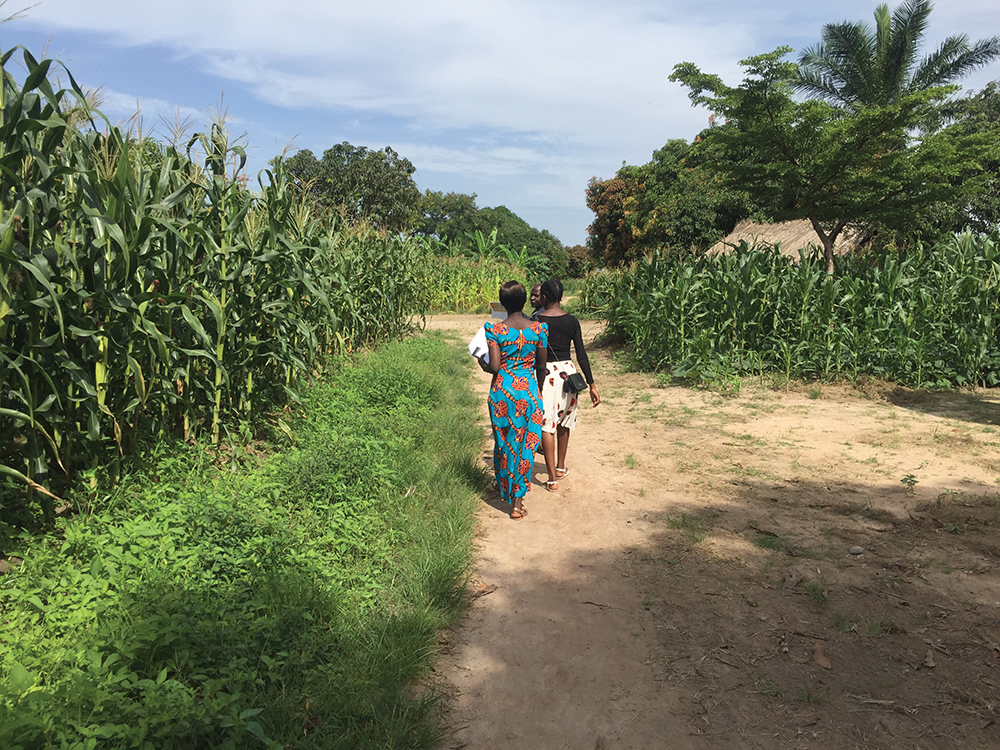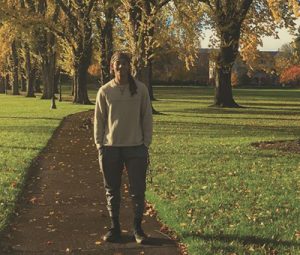Scion in New Zealand is a beacon for international researchers in the forestry and wood products industries. More than half-a-dozen Oregon State researchers have connections to Scion, an institute that specializes in research, science and technology development for the forestry, wood product, wood-derived materials and other biomaterial sectors.
A sabbatical hotspot
“Just imagine the College of Forestry with fewer students, and even more focused on research,” says Scott Leavengood, professor and director of the Oregon Wood Innovation Center, who took a sabbatical in New Zealand and worked at Scion in 2016. “Scion has hundreds of researchers and visiting students from around the globe dedicated to forestry and forest products innovation in New Zealand.”

Associate Professor Jeff Hatten also spent his spring 2019 sabbatical there working on projects related to forest nutrition dynamics. He says one aspect of Scion’s mission is to grow trees faster and more sustainably to create better wood products and healthier forests.
“It leads to forward-thinking problem solving around those issues,” says Hatten. “It’s an area of study I haven’t focused on in my career,” Hatten says. “I’m piecing information together and learning more about what Scion has done to manage for Radiata Pine and Douglas-fir.”
Radiata Pine is the largest plantation species in New Zealand. Douglas-fir is also popular, and locals sometimes refer to it as ‘Oregon fir.’
Hatten says the two species are very different but thrive in similar soils.
“There are a lot of similarities between New Zealand and the Pacific Northwest,” Hatten says. “This means there are also similar problems in terms of how we grow and harvest trees. I’m interested in learning more about the problems and helping solve them here and back in Oregon.”
Problem-solving tree diseases
Ph.D. Student Michael Gordon hasn’t been to New Zealand – yet – but he’s working with Distinguished Professor Steve Strauss and Assistant Professor Jared LeBoldus, using gene transfer methods developed by Scion to produce a disease-resistant Douglas-fir tree. While genetically modifying trees is common in species like poplar (cottonwoods and aspens), it’s uncommon in plantation species important in Oregon, like Douglas fir.
The team is using host-induced gene silencing, widely called ‘HIGS’ by scientists, to encourage trees to successfully resist diseases like Swiss needle cast — and to do it by tweaking the natural mechanisms by which trees and their pathogens interact.
Scion scientists will insert the OSU-designed genes into Douglas-fir and send micro-propagated plants to Oregon State where they will grow in a greenhouse. When acclimated, they will be planted in a USDA-regulated field trial and monitored for growth and disease resistance. Gordon says the project is at the cutting edge, and he does not know if it will be successful. However, similar projects with crop plants have seen success, and if successful, this project could open up new and exciting ways to control Swiss needle cast and many other forest diseases.
Pressing on: more work to be done
In April 2019, Liam Gilson, a graduate student studying sustainable forest management and advised by Doug Maguire, the N.B. and Jacqueline Giustina Professor of Forest Management, presented his New Zealand-related research at the Western Forestry Graduate Research Symposium hosted by Oregon State.
Gilson’s project compares growth rates of Douglas fir in the Pacific Northwest and New Zealand’s South Island.
Douglas fir grows faster in the Southern Hemisphere, compared to its native climate in the Pacific Northwest, but little research points to why.
“My project used a group of plantings in western Oregon and the South Island of New Zealand that originated from the same seed lot,” Gilson says. “The project investigates the interplay between genetics and environmental conditions within and between these two radically different geographic locations separated by 7,400 miles. The results will help to develop strategies to minimize risks of plantation damage as our climate changes, inform the choice of genetic material for future plantings and strengthen the case for gene conservation in the context of Douglas-fi r breeding in New Zealand.”
With these and other projects and collaborations in the works, the exchange of ideas, research and people between Oregon State and Scion will likely continue, as New Zealand continues to promote the use of sustainable forestry practices and strive toward an even greener economy.
A version of this story appeared in the fall 2019 issue of Focus on Forestry, the alumni magazine of the Oregon State University College of Forestry. Learn more about international programs within the College of Forestry here.



 Robert Rose is a senior studying
Robert Rose is a senior studying  Senior Vanessa Mckinney is passionate about forestry, natural resources and conservation.
Senior Vanessa Mckinney is passionate about forestry, natural resources and conservation. The Oregon Forest Practices Act (FPA) is up for renewal in 2020. According to the State of Oregon, the FPA “sets standards for all commercial activities involving the establishment, management or harvesting of trees on Oregon’s forestlands.
The Oregon Forest Practices Act (FPA) is up for renewal in 2020. According to the State of Oregon, the FPA “sets standards for all commercial activities involving the establishment, management or harvesting of trees on Oregon’s forestlands. In FY 2017 and 2018, the College of Forestry and the
In FY 2017 and 2018, the College of Forestry and the  After a walk across the United States and an epic 48-hour experience in Grand Canyon National Park,
After a walk across the United States and an epic 48-hour experience in Grand Canyon National Park,  When Bill and Marion Collins moved onto 160 acres near Gold Hill in Jackson County, they had no idea what to do with their land or how to manage it.
When Bill and Marion Collins moved onto 160 acres near Gold Hill in Jackson County, they had no idea what to do with their land or how to manage it.